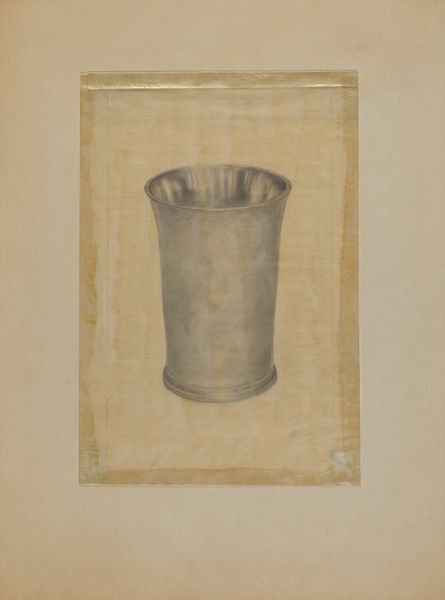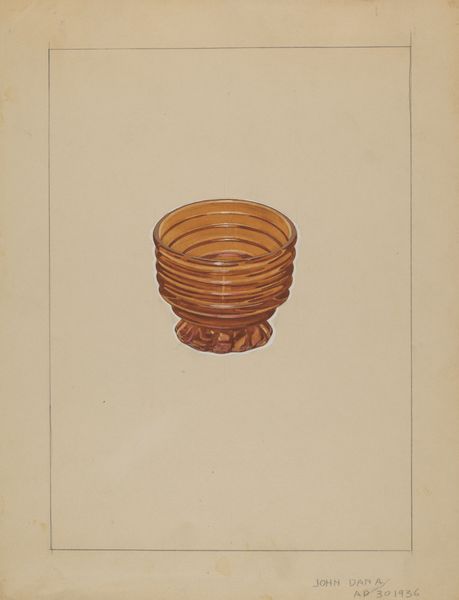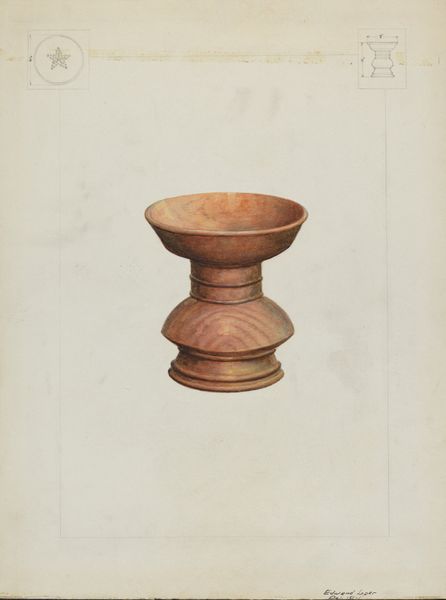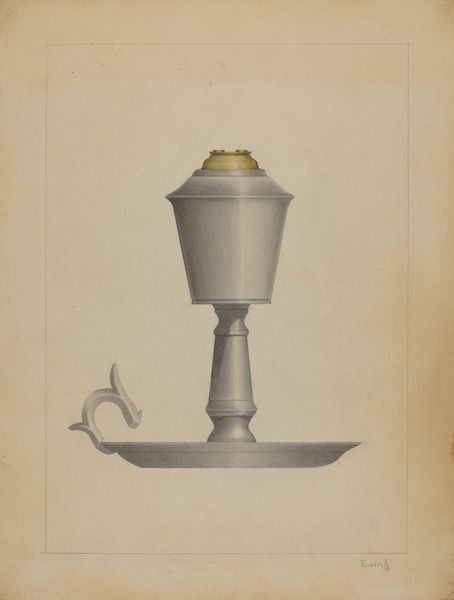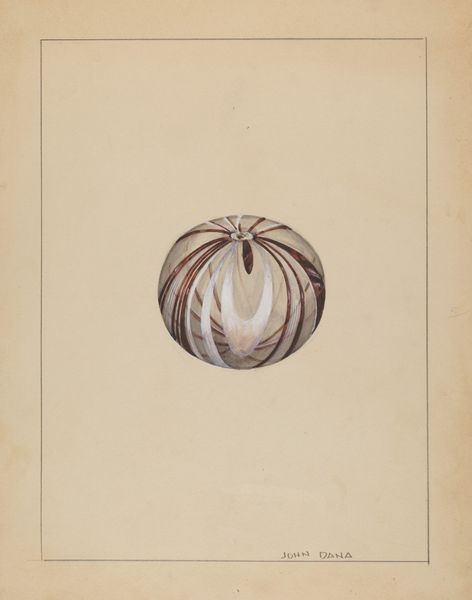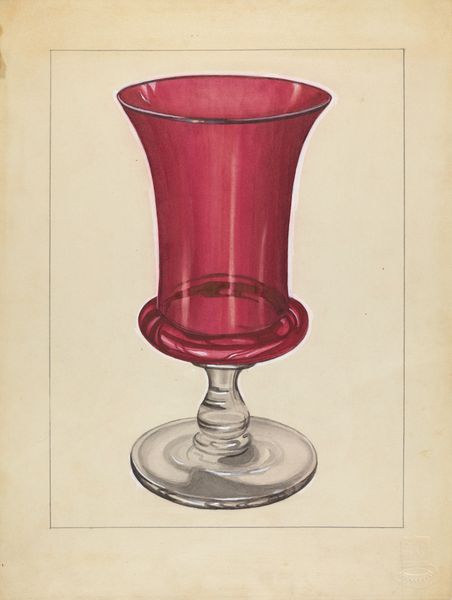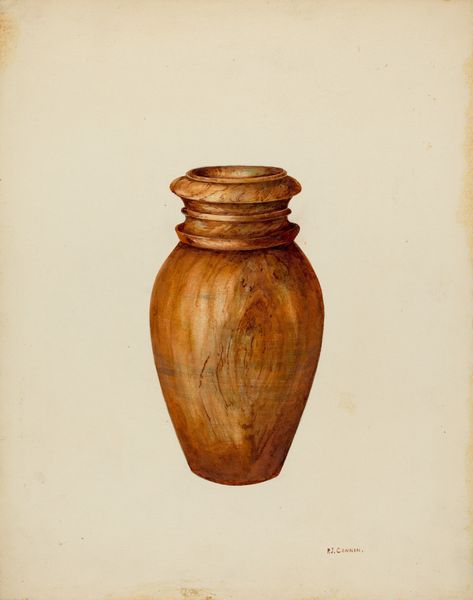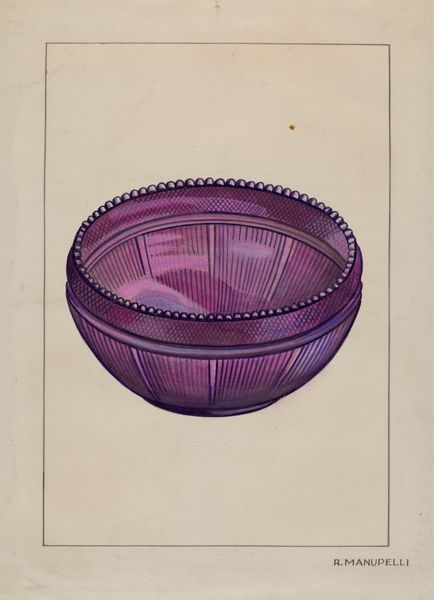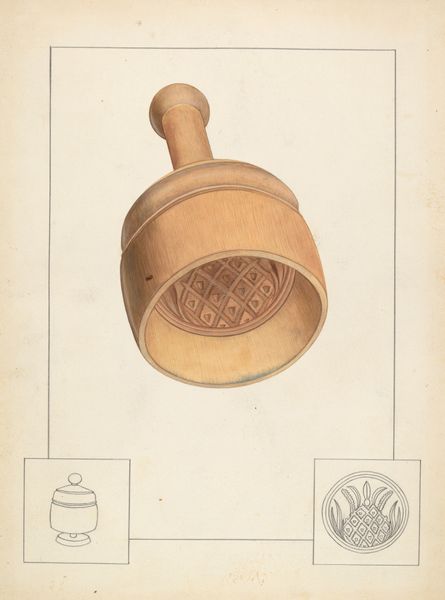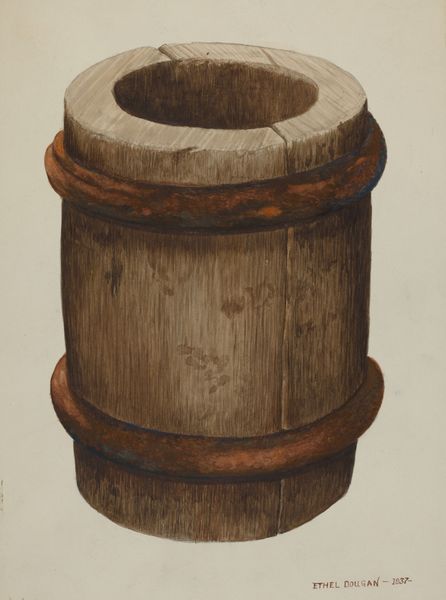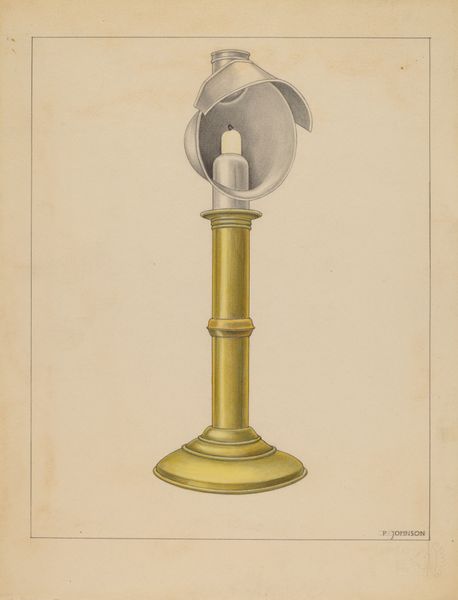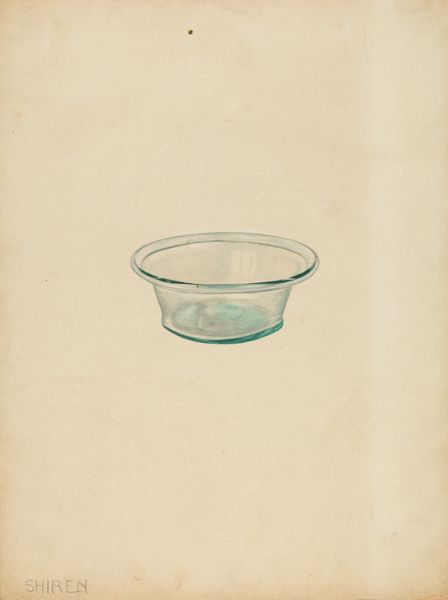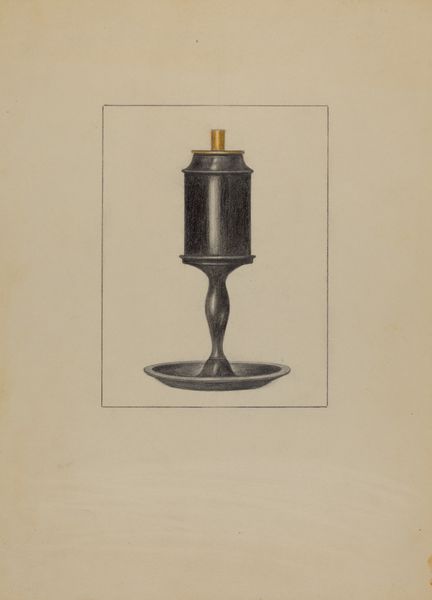
drawing, watercolor
#
drawing
#
watercolor
#
watercolour illustration
#
modernism
#
watercolor
Dimensions: overall: 30.4 x 22.7 cm (11 15/16 x 8 15/16 in.)
Copyright: National Gallery of Art: CC0 1.0
Curator: There’s a rather unassuming, quiet charm about this artwork titled "Salt Cellar," a watercolor drawing completed around 1936. What's your immediate reaction? Editor: It feels so solitary. Placed within so much negative space, it's hard not to consider how that isolation mirrors the precarity of everyday domestic objects rendered monumental only in the midst of a global crisis, don't you think? Curator: That's an interesting take. I’m drawn to the simplicity of the subject, elevated through the detailed rendering. It reminds us that even mundane objects can possess symbolic weight, hinting at domestic rituals and societal norms around sustenance and preservation. Editor: Absolutely, and let's not overlook the societal implications of something as ubiquitous as salt. Its preservation function throughout the era and beyond casts a quiet light on class, labor, and who had access to essential resources and objects to keep things fresh, and what things! It speaks volumes about structures of inequality made visible through a small drawing. Curator: I see your point. The modernist aesthetic—simplistic yet deliberate— perhaps suggests a search for essential forms, almost as a way to reconnect with simpler times amid widespread anxieties. But I wonder, does it succeed, or does the starkness of its depiction make those anxieties even more tangible? Editor: It does both, and beautifully so! By taking this domestic object out of circulation as art, John Dana is both reflecting and implicating. It's no longer *just* a "salt cellar." It has acquired an added significance because it speaks to these wider contexts. Curator: That reading adds considerable depth to the piece. Ultimately, it serves as a reminder of the layers of meaning inherent in the everyday, transforming our understanding through both artistic skill and critical lens. Editor: Precisely. This work shows the inherent entanglement of the aesthetic with sociopolitical reality, pushing us to consider art’s crucial position as cultural commentary even—and perhaps especially—in its quietest forms.
Comments
No comments
Be the first to comment and join the conversation on the ultimate creative platform.
